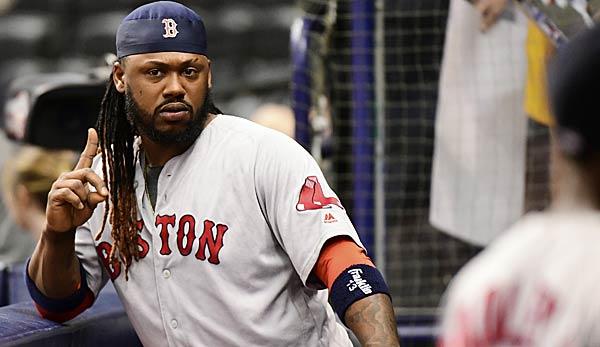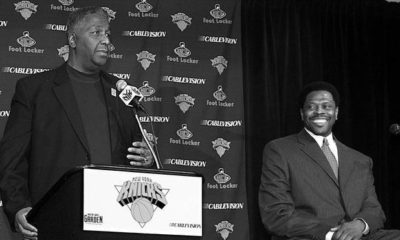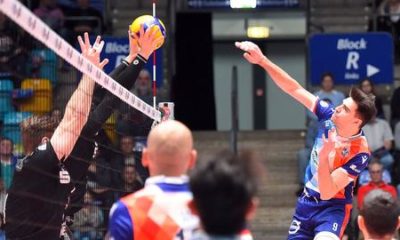A few weeks ago, the Boston Red Sox caused a sensation by kicking out Hanley Ramirez, one of their starters – although there was no obvious sporting reason for that. The Minnesota Twins found a creative way to get rid of one of their stars. SPOX is looking at ways and means of separating MLB teams from expensive players these days.
If you want to get rid of a player in the NFL, you can usually dismiss him simply because his contract is not guaranteed anyway. And if a larger part of the salary is guaranteed, you just go for the trade. The best example of this is certainly the quasi deportation of quarterback Brock Osweiler, who was traded from the Houston Texans to Cleveland before last season, including a second round pick.
The Browns – equipped with almost infinite cap space, promptly swallowed the annual salary of 16 million dollars to get another draftpick. They then dismissed the player before the start of the season and paid him not to play for them.
But what does this anecdote actually have to do with the MLB? Well, first and foremost it shows how another US professional league deals with players who still cost a lot of money but should actually leave.
In baseball, on the other hand, people used to go for a trade in such cases under the motto: “Give us your expensive problem child and you take ours for it. In and vis-à-vis the media, there is always meaningful talk about the fact that a change of scenery would perhaps do the ex-star concerned good. Maybe then he’d regain his former strength.
But of course there is another way. In that sense, the Minnesota Twins. These recently separated from long-time pitcher Phil Hughes, who was once imported from New York with great hopes, where he had shown greater potential, at least to some extent.
In this season and after numerous operations it was clear that Hughes would no longer necessarily be able to meet his former demands. After a weak start in the rotation, the right-hander was finally transported into the bullpen, so he was only a substitute pitcher. An even more expensive one – with an annual salary of 13.2 million in 2018 and 2019.
So what to do? The obvious thing would have been a dismissal, of course. He was “designated for Assignment”, i.e. there was only one trade and one dismissal to choose from. The dismissal would have meant that the Twins would have had to swallow the entire remaining sum of about $18 million in salary.
However, a conventional trade was not possible, who wanted a hard-nosed former young star, who is also extremely expensive? And even taking over large parts of the still outstanding salary – more than 20 million dollars – was still no reason for potential interested parties to bite.
So in Minnesota they reached for the extreme and put a rather high draft pick – technically a second-round pick – into the package, which then called the San Diego Padres on the plan. As is well known, they are in the rebuild and an additional second rounder is very attractive. Essentially at a friendship price of about five to six million dollars – Minnesota sent 14.5 million dollars in cash to the West Coast. You can if you scoutet well and know what you are doing in the draft.
But there is another way, as the Boston Red Sox have now proven. They have Hanley Ramirez quite surprisingly “DFA’d” and then it actually came to the dismissal, which everyone had expected. The Red Sox must therefore pay the annual salary of 22 million dollars.
As it was already clear before the season, the contract of the First Baseman would have been automatically extended for another 22 million dollars until the end of 2019 if 497 plate appliances had been reached this year. A risk you wouldn’t take. So it was promptly explained that it was the manager Alex Cora’s decision to dismiss him, not the front office.
The Company Line: Ramirez was certainly not so keen on bench presses and could have rebelled. And Mitch Moreland is much better defensively anyway, it was said. The threat of an extension of the contract, on the other hand, officially played no role at all.
Draftpick trades to get rid of expensive problem cases, layoffs without obvious sporty reasons at first glance, accepting massive salary increases – the MLB is entering an unfamiliar terrain that is almost part of everyday life elsewhere but is unfamiliar in baseball.
A development that hardly anyone will like, especially against the background of the already tense situation between the MLBPA players’ union and the league. Players in particular still feel the aftermath of the extremely tough free agent market in winter.
If teams now start to deport players so clumsily, then the chances of a strike increase when negotiations for the next basic treaty are due in a few years’ time. The last strike was in 1994, when it was long, tough and put sport in a very bad public light. A situation you certainly don’t want to have a second time.
This article was published without previous view by the Major League Baseball.



















You must be logged in to post a comment Login